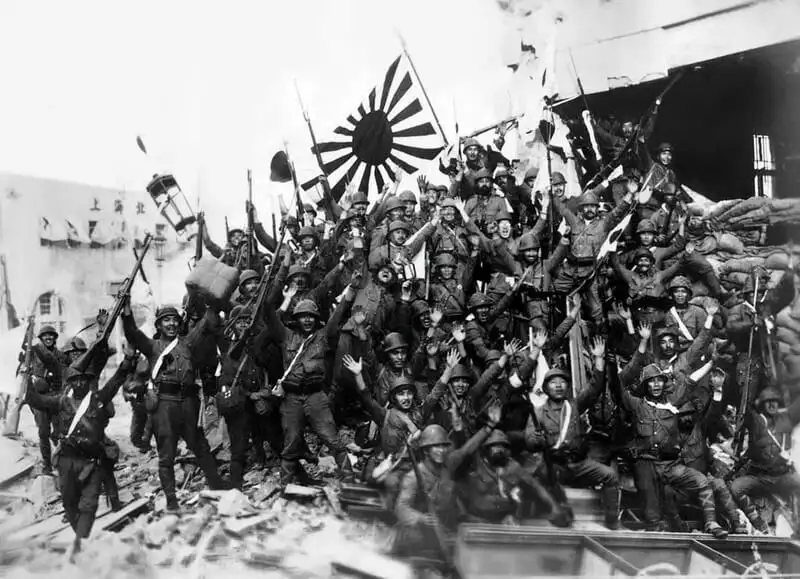Martial law is typically imposed as a temporary measure to restore order during emergencies like natural disasters, foreign invasions, or riots. However, history has shown that both authoritarian and democratic regimes have repeatedly abused martial law to suppress political opposition or consolidate power. In this article, Pywar will explore six countries that declared martial law and the dark side of its implementation.
What Is Martial Law?
The term “martial law” originates from “martial,” meaning related to the military, derived from Mars, the Roman god of war. Under martial law, many functions typically handled by civilian authorities are transferred to the military, including emergency response, law enforcement, and even court operations.
In theory, existing laws, including constitutionally protected rights and civil liberties, should remain unchanged during martial law. However, in practice, martial law is often used as a legal tool to detain individuals without fair trials.
“The problem is that martial law often becomes an excuse for authoritarian leaders,” says Stephen Vladeck, a law professor at Georgetown University. “The challenge lies in distinguishing between rare, exceptional cases where martial law is genuinely necessary and the more common instances where it is used to suppress civil liberties, infringe on our rights, or undermine democratic institutions.”
Below are six notable instances of martial law declarations, both in the United States and other countries.
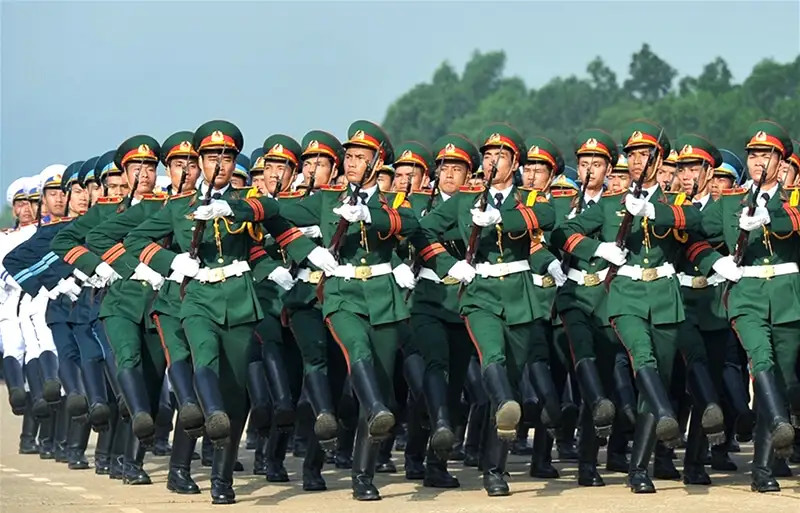
- The term “martial law” originates from “martial,” meaning related to the military, derived from Mars, the Roman god of war. (Source: Collected)
American Civil War (1862-1866): Martial Law During Wartime
During wartime, declaring martial law can be seen as justifiable, especially when one half of a country is pitted against the other. President Abraham Lincoln extensively used martial law during the U.S. Civil War, particularly in areas where local governments were in disarray or unable to enforce federal law. These included border states like Missouri, Kentucky, and Indiana.
Lincoln issued several proclamations allowing military courts to replace civilian ones in trying individuals suspected of supporting the Confederate South. Proclamation No. 94, signed in 1862, extended martial law to “all rebels, insurgents, their aiders or abettors, as well as those who obstruct voluntary enlistment, resist the draft, or engage in disloyal acts aiding rebels against the U.S. government.”
After the war, the U.S. Supreme Court issued a landmark ruling criticizing the federal government for overstepping its authority. In Ex parte Milligan (1866), the Court ruled that military courts could only be used when civilian courts were unavailable. This was not the case in Indiana, where defendant Lambden P. Milligan was sentenced to death for disloyalty to the Union.
“The Court emphasized that martial law is inappropriate when civilian courts ‘remain open and functioning unimpeded,’” explains Professor Stephen Vladeck. “This clarified the limits of martial law, stating that there is no justifiable reason to maintain it when the civilian judicial system can perform its duties.”
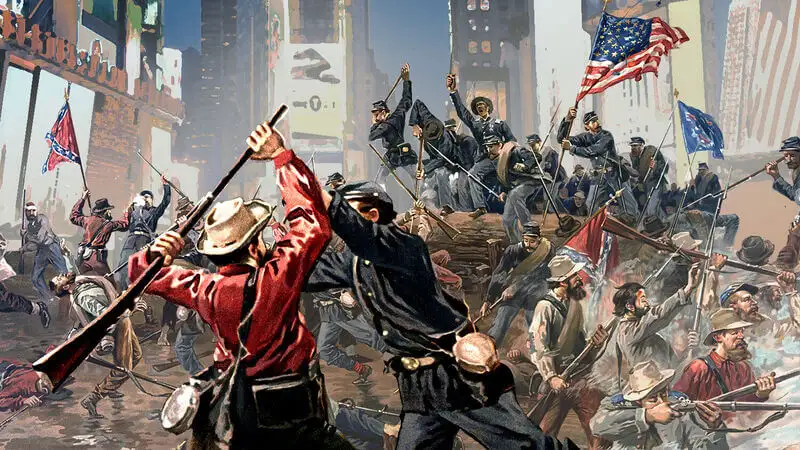
- Scenes of combat during the American Civil War and the declaration of martial law. (Source: Collected)
Germany (1933-1945): Martial Law and the Rise of Fascism
In 1933, Adolf Hitler and the Nazi Party rose from obscurity to lead Germany within a coalition government. Capitalizing on widespread discontent after Germany’s defeat in World War I and a severe economic crisis, Hitler blamed the nation’s woes on “Jewish conspiracies” and communists.
On February 27, 1933, the German Reichstag building in Berlin was set ablaze. German police arrested a Dutch laborer who allegedly confessed that the arson was intended to spark a communist uprising. Hitler seized on the Reichstag fire to stoke fears of a communist revolution and persuaded the German parliament to declare martial law.
This declaration, known as the Reichstag Fire Decree, went far beyond the usual scope of martial law. Instead of merely placing civilian institutions under military control, Hitler’s decree suspended most civil liberties for German citizens, including freedom of speech, press, assembly, and more. The Nazi paramilitary police, the Sturmabteilung or “Storm Troopers,” arrested thousands of suspected communists and detained them without trial.
The “emergency” of 1933, cited to enact the Reichstag Fire Decree, paved the way for a full-fledged fascist dictatorship that only ended with Germany’s defeat in World War II.

- Adolf Hitler and German troops during the martial law period. (Source: Collected)
Hawaii (1941-1944): Martial Law and Violations of Citizen Rights
Following Japan’s attack on Pearl Harbor on December 7, 1941, the entire Hawaiian archipelago was placed under martial law. However, rather than being a temporary measure until civilian governance could resume, martial law persisted throughout World War II.
At the time, Hawaii was not yet a state but a U.S. territory with full constitutional rights. Under martial law, Hawaiian citizens, including many of Japanese descent, were routinely stripped of basic rights, such as the right to a fair trial.
During this period, the military assumed all roles of civilian government in Hawaii, from trash collection to adjudicating criminal cases unrelated to military threats. A notable example is Harry White, a stockbroker arrested and convicted of embezzlement by a military court instead of a civilian jury.
White and others took their cases to the U.S. Supreme Court. In Duncan v. Kahanamoku (1946), the Court ruled that the imposition of martial law in Hawaii was unconstitutional. After the initial military threat subsided, Hawaiian citizens should have been tried by civilian authorities rather than military ones.
“The lesson here is that martial law may be necessary immediately following a natural or man-made crisis,” notes Professor Stephen Vladeck. “But with each passing hour and day, as civilian governance recovers, the justification for maintaining martial law diminishes.”
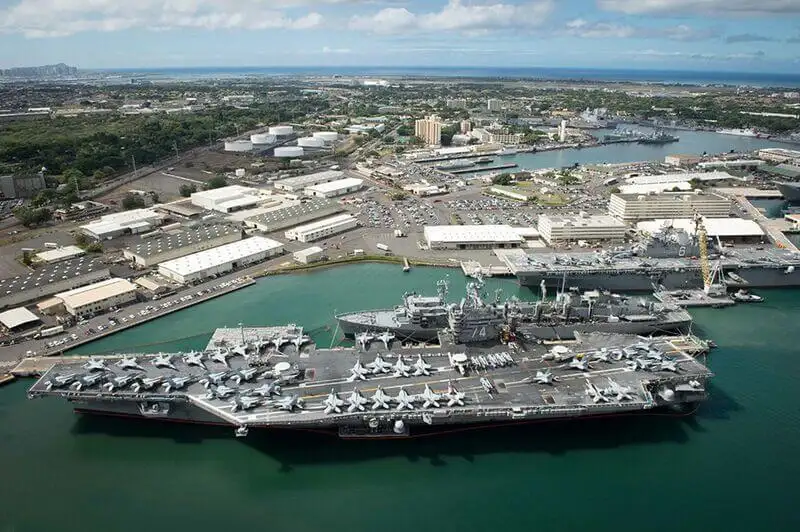
- Pearl Harbor naval base during the martial law period. (Source: Collected)
Philippines (1972-1981): Martial Law Under Ferdinand Marcos
In 1972, Ferdinand Marcos, President of the Philippines, was nearing the end of his second and final term. While much of the Filipino population lived in poverty, Marcos and his wife, Imelda, a former beauty queen, enjoyed a lavish lifestyle. Determined to retain power, Marcos announced plans to become prime minister in a new parliamentary government. When protests erupted, he blamed a communist conspiracy and declared martial law, which lasted nearly a decade.
Under martial law, any opposition to the Marcos regime was brutally suppressed. Tens of thousands of Filipinos—including students, journalists, scholars, and religious leaders—were arbitrarily arrested, imprisoned, and tortured. Many were executed, including opposition leader Benigno Aquino Jr.
After martial law was lifted in 1981, Marcos lost an election to Aquino’s widow but claimed the results were fraudulent. As massive protests erupted nationwide, Marcos was airlifted to Guam by U.S. officials and later lived in exile in Hawaii, where he died.
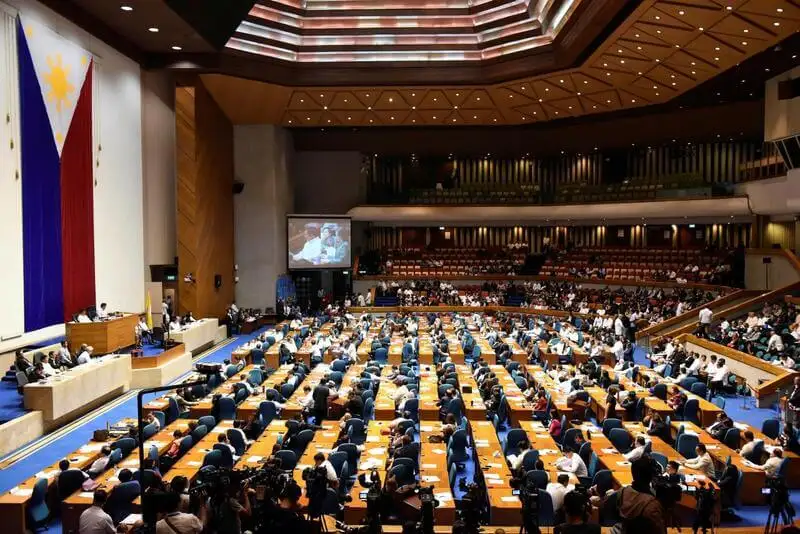
- The Philippine Congress during the martial law period under Ferdinand Marcos. (Source: Collected)
China (1989): Martial Law and the Tiananmen Square Massacre
In April 1989, students protested in Beijing’s Tiananmen Square, calling for political and economic reforms. At the time, communist control was weakening in the Soviet Union and its satellite states, and the students hoped China would follow suit. After several weeks, the number of protesters in Tiananmen Square swelled to over a million, drawing unwanted international media attention.
On May 20, Chinese Premier Li Peng declared martial law in Beijing, pledging that the People’s Liberation Army (PLA) would only be deployed to restore order and ensure public safety, not to suppress the protests.
“The deployment of the PLA is certainly not aimed at the students,” Li stated. “We hope that people from all walks of life, especially democratic parties, will support the PLA in protecting the capital and maintaining public security. We ask for your understanding and support.”
When PLA soldiers arrived in Beijing, they faced peaceful resistance from citizens who urged them to abandon their weapons and join the movement. However, the military launched a brutal crackdown. On the nights of June 3 and 4, Chinese troops used tanks and machine guns to attack Tiananmen Square. The exact death toll in Beijing remains unknown but is estimated to reach into the thousands.
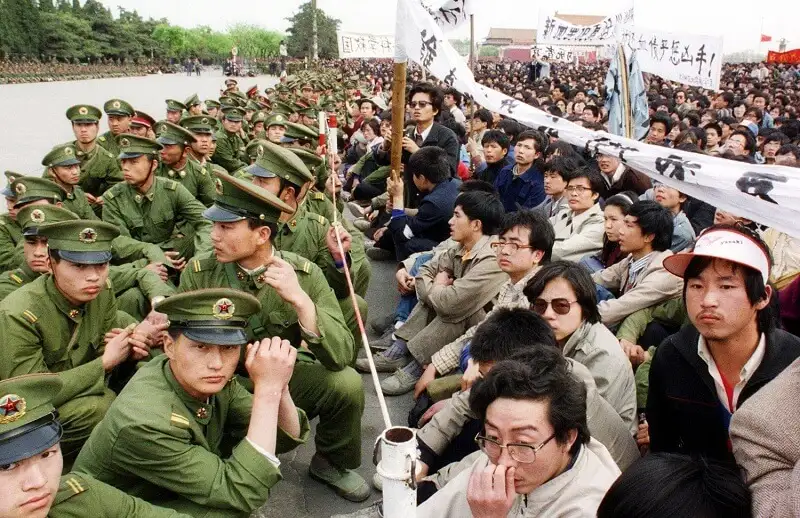
- Chinese troops and protesters at Tiananmen Square in 1989. (Source: Collected)
South Korea (2024): Martial Law and a Severe Political Crisis
On December 3, 2024, South Korean President Yoon Suk Yeol declared a nationwide emergency martial law, accusing anti-state and pro-North Korean forces of plotting to overthrow the government. This marked the first time since 1980 that South Korea imposed martial law, sparking domestic outrage and international attention.
Immediately after the declaration, military and police forces surrounded the National Assembly, blocking lawmakers from entering. However, just six hours later, the National Assembly convened an emergency session and passed a resolution nullifying the martial law order, forcing President Yoon to retract it.
The event triggered a severe political crisis. On December 14, the National Assembly passed a resolution to impeach President Yoon Suk Yeol, accusing him of violating the Constitution by illegally declaring martial law. By December 31, the Seoul Western District Court issued an arrest warrant for Yoon, making him the first sitting South Korean president to face such an order.
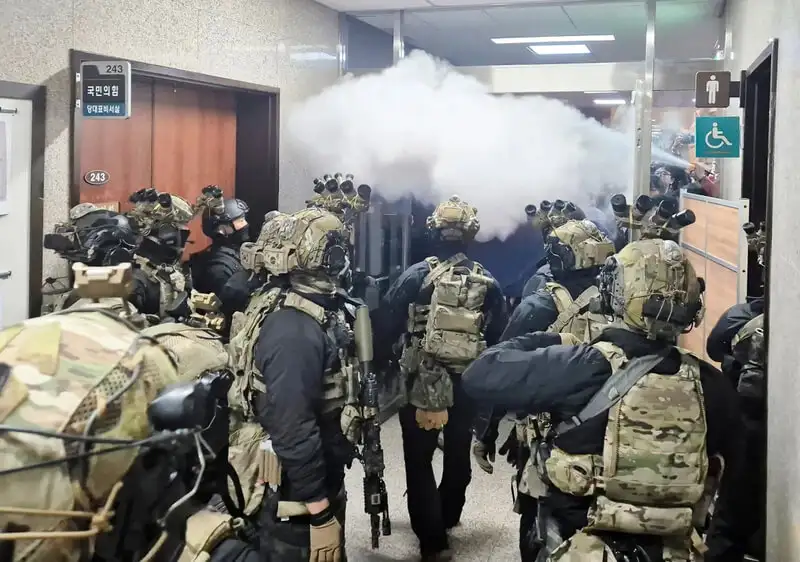
- South Korean special forces during the martial law period. (Source: Collected)
Conclusion
Martial law, though intended as a temporary measure to maintain order, has repeatedly been abused to consolidate power and suppress freedoms. From the American Civil War and Nazi Germany to the Tiananmen Square massacre and South Korea in 2024, each case underscores the importance of safeguarding human rights and democratic values. Pywar hopes this article helps you better understand and appreciate these historical lessons. Don’t forget to explore more articles on hybrid warfare and the latest news.
Translated by: Lê Tuấn
Source: history.com – 5 Times That Martial Law Was Declared



